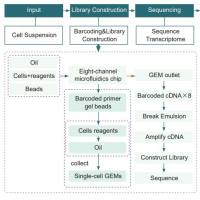Xenopus tropicalis as a Model Organism for Genetics and Genomics: Past, Present, and Future
互联网
468
Xenopus tropicalis was introduced as a model system for genetic, and then genomic research, in the early 1990s, complementing work on the widely used model organism Xenopus laevis . Its shorter generation time and diploid genome has facilitated a number of experimental approaches. It has permitted multigenerational experiments (e.g., preparation of transgenic lines and generation of mutant lines) that have added powerful approaches for research by the Xenopus community. As a diploid animal, its simpler genome was sequenced before X. laevis , and has provided a highly valuable resource indispensable for all Xenopus researchers. As more sophisticated transgenic technologies for manipulating gene expression are developed, and mutations, particularly null mutations, are identified in widely studied genes involved in critical cellular and developmental processes, researchers will increasingly turn to X. tropicalis for definitive analysis of complex genetic pathways. This chapter describes the historical and conceptual development of X. tropicalis as a genetic and genomic model system for higher vertebrate development.








